When I bought my first pepper spray, I accidentally use it inside my room to test it and it was so hard to figure out how to clean pepper spray from eyes and off surfaces.
Here is a simple guide that help you so much to fix any mistake you made 🙂
How To Clean Pepper Spray from Eyes:
- Stay Calm:
- If you’ve been sprayed, try to remain calm to avoid panicking.
- Move to Fresh Air:
- Immediately move to an area with fresh air to help minimize the effects of the spray.
- Avoid Rubbing:
- Do not rub your eyes, as this can worsen the irritation.
- Blink Frequently:
- Blink frequently to encourage tears, which can help flush out the pepper spray.
- Flush with Water:
- Rinse your eyes with cool water for at least 15 minutes. Use a gentle stream to avoid causing additional discomfort.
- Use Milk or Milk Alternative:
- If water is not readily available, you can use milk or a milk alternative. Pour it over your eyes or soak a cloth and gently wipe your eyes.
- Contact Lenses:
- Remove contact lenses if you’re wearing them, as pepper spray may adhere to them.
- Seek Medical Attention:
- If irritation persists or is severe, seek medical attention immediately.
Cleaning Pepper Spray Off Surfaces:
- Ventilate the Area:
- Ensure proper ventilation by opening windows and doors to allow fresh air in.
- Wear Protective Gear:
- If cleaning a contaminated surface, wear protective gloves and, if necessary, a mask to avoid exposure.
- Remove Excess Spray:
- Use a disposable cloth or paper towel to gently blot and remove any excess pepper spray from the surface.
- Use a Mild Detergent:
- Mix a solution of mild detergent and water. Apply the solution to the affected area and gently scrub with a sponge or cloth.
- Rinse with Water:
- Rinse the cleaned area thoroughly with water to remove any remaining detergent.
- Ventilate Again:
- Allow the area to air out, ensuring good ventilation to disperse any lingering residue.
- Dispose of Materials Safely:
- Dispose of any used cleaning materials, such as gloves and cloths, safely and responsibly.
- Seek Professional Cleaning:
- If the pepper spray contamination is extensive or on a sensitive surface, consider seeking professional cleaning services.
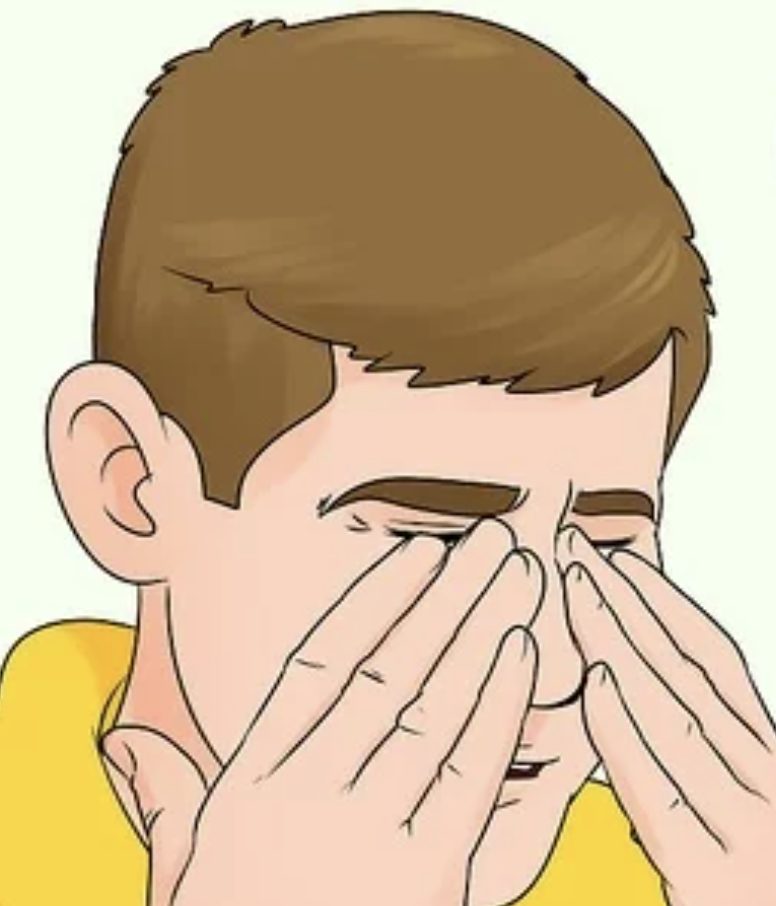
Let’s get to the full detailed guide to know all the steps & tactics to remove the chili peppers, clean clothes, use soap, use milk with the affected skin & how to stay calm when it comes to dealing with a trouble breathing
Safety precautions when dealing with pepper spray
- Always keep the safety lock engaged when not in use to avoid unintentional discharge.
- Familiarize yourself with the spray range and pattern before you are in an emergency situation.
- Aim carefully, keeping in mind that wind can alter the spray’s trajectory, potentially affecting innocent parties or even yourself.
- Store pepper spray in a cool, dry area away from children and educate family members about its purpose and risks.
- Dispose of expired canisters properly, as the propellant may degrade over time and cause the canister to leak or burst.
Potential hazards and effects of pepper spray exposure
- Immediate burning sensation in the eyes, skin, and mucous membranes.
- Temporary blindness, lasting up to 45 minutes in many cases, due to forcible closure of the eyelids.
- Difficulty breathing or choking, as the spray induces coughing and can inflame the bronchial passages.
- Panic and disorientation can result, particularly if the sprayed individual has not been previously exposed to pepper spray.
- Decontamination is necessary, which involves flushing the affected areas with large amounts of water and avoiding creams and oils that can trap the capsaicin.
In conclusion, while pepper spray is a defensive tool, it should be handled with respect and caution. Knowing the proper precautions and understanding the effects can help ensure it’s used safely and responsibly.
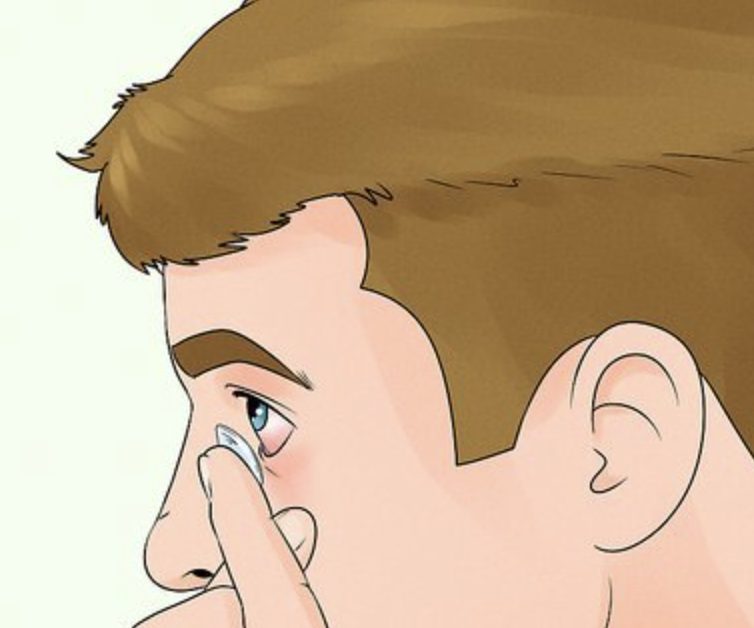
Removing Pepper Spray from Eyes
If someone has the misfortune of getting pepper spray in their eyes, it’s crucial to act quickly to alleviate the pain and minimize the effects. Pepper spray is oil-based, making it sticky and difficult to wash out, but proper and prompt first aid can help a person recover more swiftly from the ordeal.
Immediate steps to take after exposure to pepper spray:
- Do not rub your eyes, as this action can further embed the capsaicin into the eye tissue, worsening the pain.
- Blink rapidly to promote tearing, which can help to flush out some of the irritant.
- Remove contact lenses immediately if you are wearing any, and avoid touching your face with contaminated hands.
- Face the breeze or a fan with your eyes open to allow the air to help evaporate and remove the oily substance.
- Open doors and windows if you were in a indoor place then, wash your Face and eyes with cool water.
Washing the affected part in the body with Soap and water:
- Finding clean water is essential. You should flush the eyes gently with cold water for at least 15 to 20 minutes. This action helps to reduce the burning sensation and gradually wash away the capsaicinoids & pepper spray in your eyes.
- Use a mild, tear-free soap ( baby soap) to help remove the oils from the skin around the eyes, but be cautious not to get soap directly in the eyes, as it could cause further irritation & make the pain even worse.
- Mild eye drops may also be used after flushing to help alleviate the burning and assist in the natural flushing process.
- Not wearing makeup or contact lenses until the eyes are fully healed is recommended, as they can hold remnants of pepper spray.
In third-person perspective, it’s always wise for individuals to familiarize themselves with these steps, should they need to provide assistance to others or if they ever find themselves in a situation where they come into contact with pepper spray.
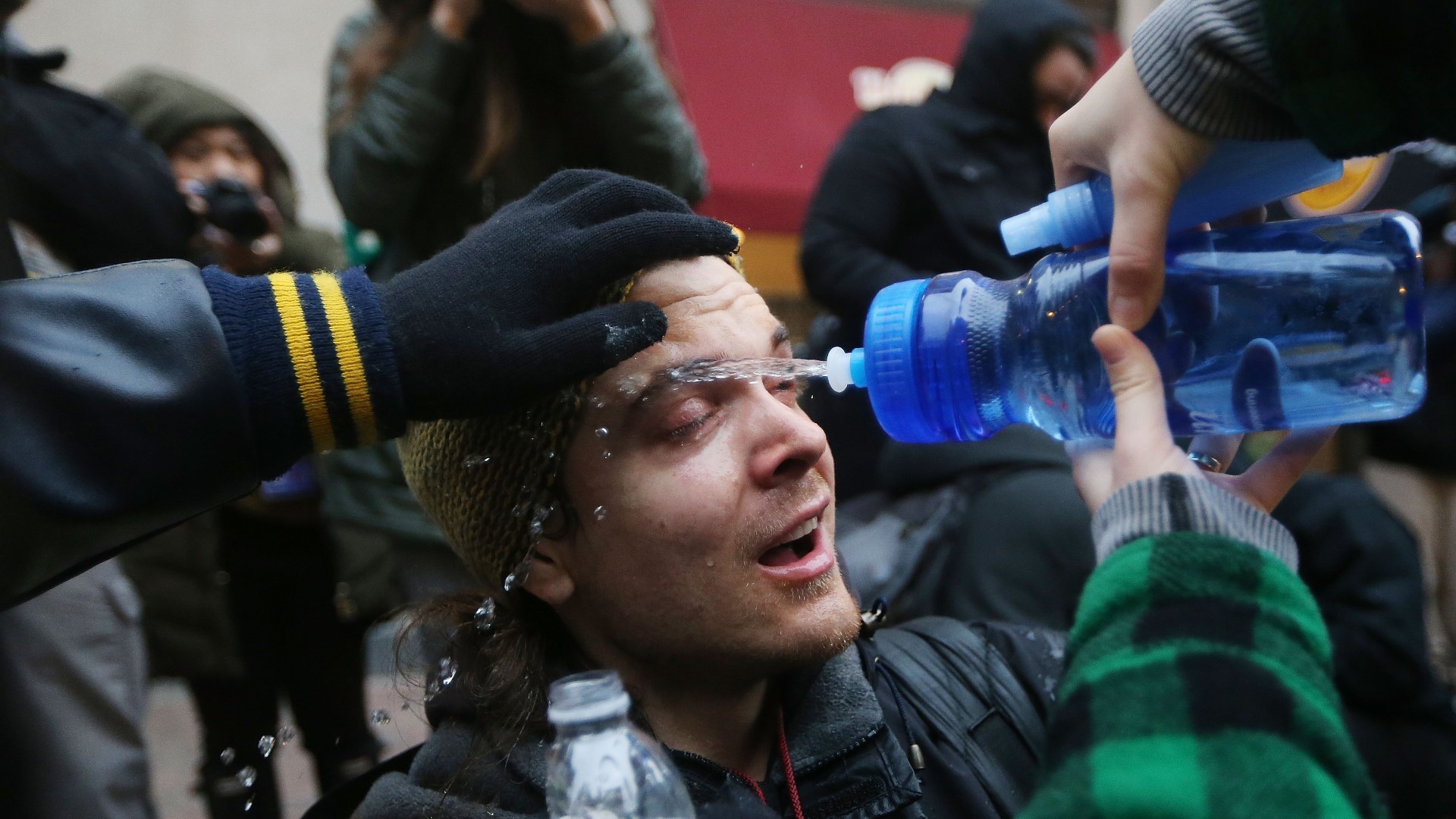
Using a DIY Eyewash Solution To Get Pepper Spray Removed
Individuals affected by pepper spray may not always have immediate access to commercial remedies. In such cases, a DIY eyewash solution can prove to be a practical and quick alternative. It’s important to understand how to create and use such a solution to ensure it’s done safely and effectively to mitigate the effects of the pepper spray.
Creating a homemade eyewash solution to neutralize pepper spray
- Identify safe ingredients: A simple mixture of water and baking soda can help neutralize the burn. Generally, mixing 3 parts water to 1 part baking soda is recommended.
- Ensure the water is lukewarm: Not too hot or too cold, as extremes in temperature can cause additional discomfort to the afflicted eyes.
- Stir until the baking soda is completely dissolved: It’s critical that there are no granules in the solution that might scratch the eye surface.
Applying the DIY solution to the eyes for relief
- Use a clean cup or an eyewash bottle: to pour the solution gently into the eyes or use a sterile eye cup to hold the solution for eyeball immersion.
- Blink and move your eyes: While submerged in or being flushed with the solution to ensure it reaches all areas of the eye and under the eyelids.
- Be patient: Relief may not be instantaneous, and it may require several applications to reduce the effects of the pepper spray significantly.
- Seek medical attention if symptoms persist: After attempting to neutralize the effects at home, it’s important to consult with a medical professional if pain or vision issues continue.
As they prepare and apply the DIY solution, individuals will gain a sense of control over the situation. Ensuring accessibility to these household items can prove invaluable during emergencies involving pepper spray exposure.

Using a DIY Eyewash Solution
Pepper sprays can leave individuals in pain and discomfort, and sometimes they may not have access to commercial remedies immediately. In such instances, using a DIY eyewash solution can be a practical and quick alternative to ease the effects of pepper spray. Using this solution safely and effectively, however, is crucial to avoid further injury and discomfort.
Creating a homemade eyewash solution to neutralize pepper spray
To make a DIY eyewash solution, individuals need to identify safe ingredients first. Mixing baking soda and water in a ratio of 3:1 or three parts of water to one part baking soda is generally considered effective for reducing the discomfort and neutralizing the burn caused by pepper spray. Before using the solution, ensure that the water is lukewarm and stir it well to ensure that the baking soda is entirely dissolved into the solution.
Applying the DIY solution to the eyes for relief
Using a clean cup or an eyewash bottle, pour the homemade solution gently into the eyes or use a sterile eye cup to hold the solution for eyeball immersion. Blink and move the eyes while submerged in or being flushed with the solution to ensure that it reaches every area of the eye surface and goes under the eyelids. Patience is key since relief may not be instantaneous and it may require several applications to reduce the effects of the pepper spray considerably. It is vital to seek medical attention if pain or vision issues persist after attempting to neutralize the effects at home.
Seeking Professional Help
When to seek medical assistance after pepper spray exposure
Although a DIY solution can be temporarily relieving after pepper spray exposure, some cases could be severe and need medical attention. Suppose burning, redness, or swelling of the eye and face persists even after using the DIY solution or vision is still blurry or lost. In that case, it is best to seek professional medical treatment to avoid complications. ( Read: What Does pepper spray smell like )
Medical treatment options available for severe cases
Medical professionals can prescribe stronger medications to help soothe inflammation and pain or even perform a thorough eye examination to check for significant damages caused by pepper spray exposure.
An ophthalmologist can recommend more advanced treatment options if eye damage is severe, such as surgery. Therefore, it is vital to seek medical assistance if any symptoms persist after trying to neutralize the effects at home.
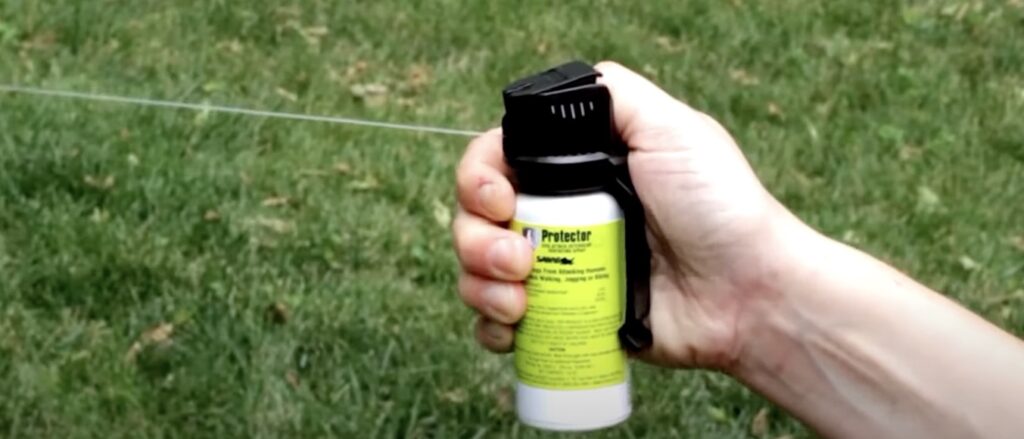
Using a DIY eyewash solution provides temporary relief, but it is essential to apply it safely and correctly to avoid further injuries. Seeking professional medical assistance for severe cases is advisable to avoid any long-term effects on vision.
Cleaning Pepper Spray off Surfaces
Pepper spray isn’t only harmful to individuals; it can also leave a lasting effect on surfaces it comes into contact with, especially if left uncleaned. Cleaning pepper spray off surfaces is crucial for preventing further contamination and injury, and using the right cleaning agents and techniques is essential.
Preventing contamination and spreading of pepper spray residue
Before attempting to clean the sprayed area, it is essential to take precautionary measures to avoid contamination. Ensure that anyone in the vicinity of the sprayed area evacuates to avoid further exposure. Wear protective gloves and clothing to prevent any residue from touching the skin and spreading to other surfaces, including door handles, light switches, or food preparation surfaces.
Using appropriate cleaning agents to remove the spray from various surfaces
When cleaning pepper spray off surfaces, individuals must choose the appropriate cleaning agent based on the type of surface and the level of contamination. For metal surfaces, white vinegar mixed with water in equal parts can be useful for removing the spray’s residue. For non-porous surfaces, such as plastics, glass, or ceramics, a combination of dish soap and warm water can be effective. For clothing and other soft surfaces, baking soda mixed with water can neutralize the pepper spray’s effects, but it is essential to use gloves to prevent further spread of the residue.
After applying the cleaning solution, let it sit for a few minutes, then rinse with clean water, making sure to dispose of the contaminated cleaning materials appropriately. Visible pepper spray residue may require several cleaning attempts, but it is crucial to avoid abrasive cleaning tools or harsh chemicals to prevent further damage to the surface.
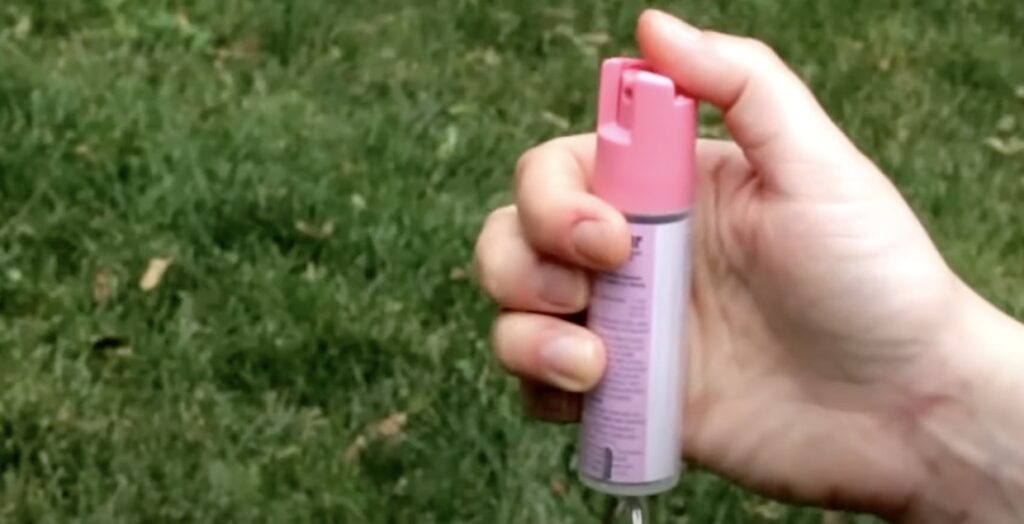
Proper Disposal of Contaminated Items
Guidelines for handling and disposing of objects contaminated with pepper spray
During the process of cleaning and removing pepper spray residue, it is essential to handle and dispose of contaminated items properly. Individuals should avoid touching their faces, eyes, or mouth while working and dispose of gloves, cleaning materials and other items in a sealed bag that is labeled appropriately. Only dispose of contaminated items once they are securely bagged and removed from the residence.
Ensuring safe disposal to prevent accidental exposure
To ensure the safety of others, it is important to dispose of contaminated materials in the appropriate way. Check with local authorities or a hazardous waste collection center for information on how to dispose of these materials safely. Individuals should avoid throwing such items in the regular trash can or pouring down any drain or toilet.
By following these guidelines, individuals can remove pepper spray residue from their belongings and stay safe while doing so. These household remedies are effective and can help restore a sense of normalcy after an incident that involves using pepper spray. Safety should always be a top priority when dealing with any hazardous materials, and proper disposal of contaminated items will ensure the safety of others.

Preventing Future Pepper Spray Incidents
Pepper spray is a popular self-defense tool, but it can be harmful if not used properly. Here are some safety precautions and tips to help prevent future pepper spray incidents.
Safety precautions to avoid accidental discharge of pepper spray
To avoid accidental discharge of pepper spray, individuals should follow certain safety precautions. First, always point the canister away from the face and towards the ground when spraying.
Practice using the spray in a safe, open area to get familiar with the spray’s range and direction. Keep the trigger locked and only unlock it when ready to use. Don’t play with the canister or use it as a toy. ( Read: How To Use Pepper Spray)
Proper storage and handling of pepper spray canisters
Proper storage and handling of pepper spray canisters is crucial to its effectiveness and safety. Canisters should be stored in a cool, dry place away from heat, direct sunlight, and children’s reach. Avoid placing the canister in a glove compartment, which can heat up easily in the sun. Check the expiration date on the canister, and replace it if it’s expired. Always handle the canister with care and avoid shaking or throwing it.
By following these tips and safety precautions, individuals can prevent future pepper spray incidents. It’s essential to handle and store pepper spray properly to ensure its effectiveness and safety. Remember, pepper spray is a self-defense tool, and it should only be used in situations where necessary for personal protection.

Conclusion
Pepper spray can be a useful self-defense tool, but it’s crucial to use it safely and effectively to avoid potential harm.
By following safety precautions and proper storage and handling techniques, individuals can prevent accidental discharge and ensure that the spray remains effective.
In the case of accidental exposure, it’s important to know how to clean pepper spray whether it’s the skin, eyes, or any surface. By following the steps outlined above, individuals can minimize the discomfort and potential harm caused by exposure to pepper spray.
However, it’s important to remember that in severe cases, seeking medical help is vital. If an individual experiences any severe symptoms, such as difficulty breathing or prolonged eye irritation or pain, they should seek medical attention immediately.
Overall, proper use and storage of pepper spray can ensure its effectiveness as a self-defense tool while preventing any potential harm to individuals in the area.
